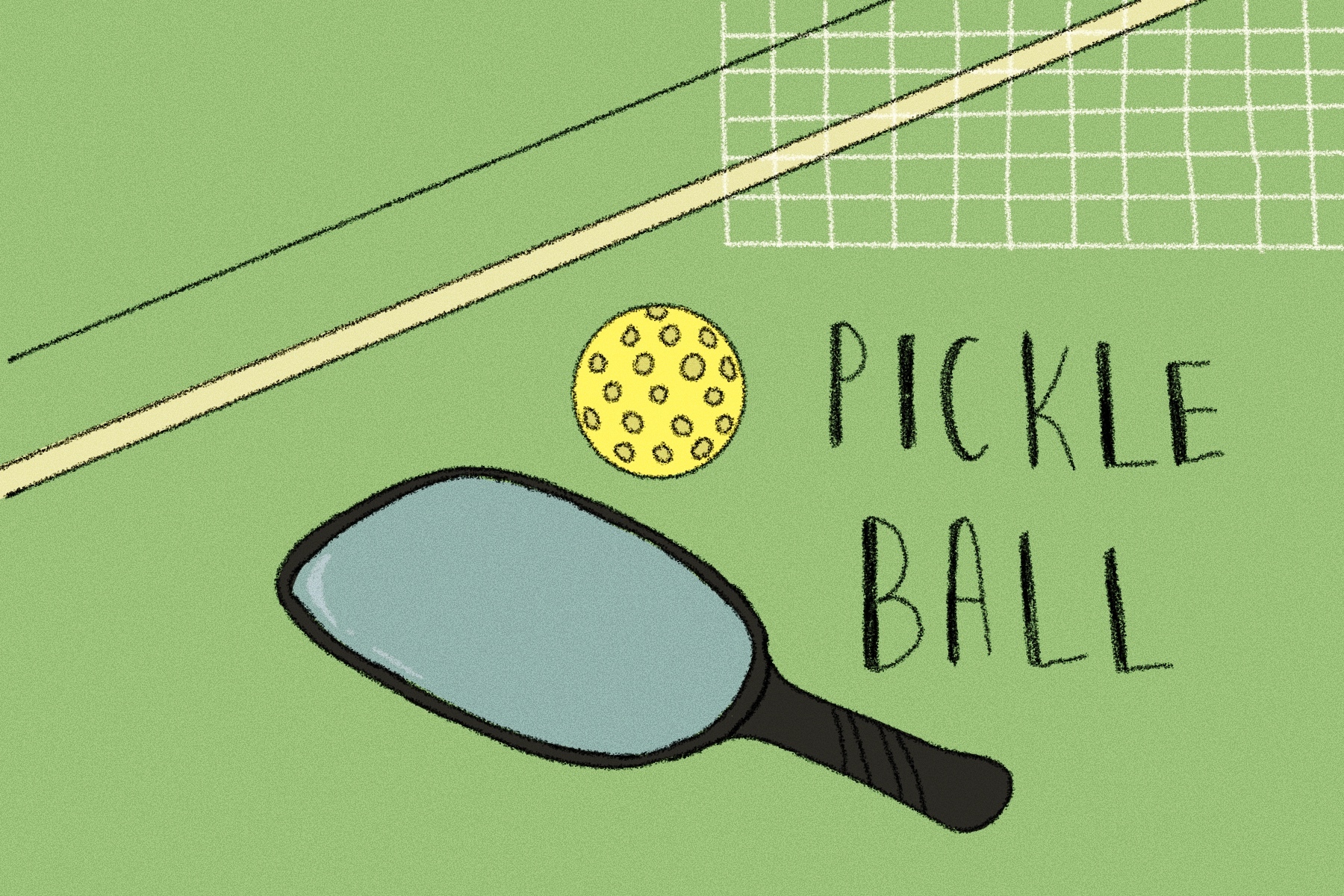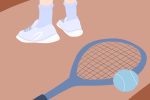Pickleball has taken its rightful place among the heavy-hitting American sports among the ranks of tennis, basketball and golf nearly sixty years after its creation. Bainbridge Island, near Seattle, Washington, can pride itself on being the birthplace of such an oddly-named sport, after three men grew bored on a summer evening in 1965. They used a perforated table tennis ball on a badminton court with makeshift paddles to invent what would later be called “pickleball.” The sport would remain largely undiscovered for decades, until it began to grow in 2014. Now, in 2023, pickleball is the fastest growing sport in the United States, with a 158.6% average growth rate over the past three years. The elements that make pickleball unique are precisely the things that make it popular for the masses.
One of the most appealing aspects of pickleball is that it combines other racket sports in a way that preserves players’ entertainment but minimizes the need for extreme physical exertion. Pickleball is played on a badminton-esque court, meaning that it is significantly smaller than a tennis court. As such, a player moves much less during pickleball than tennis; stamina and speed are not required to be a successful pickler as there is no need to be sprinting back and forth across the court. The players can often be close to stationary in doubles matches. Because of this, pickleball is accessible to older populations who cannot afford to launch themselves across concrete with reckless abandon. Associated health risks such as torn ligaments and muscles are, thankfully, minimized.
Upper body strength is not imperative for potential players, either. Pickleball paddles are much lighter than tennis rackets and pickleballs are much lighter than tennis balls, thus shifting the focus of pickleball to reaction time and reflexes rather than on the ability to lift the racket and hit hard. There is no prerequisite of Herculean arm strength in order to be an adept pickler. Similarly to the smaller courts, these characteristics of pickleball cause less severe injuries than those earned playing tennis. The loathed rotator cuff injuries that plague tennis players are much less common in pickleball, according to former tennis-player Sam Rothbart, because shots in pickleball tend to be below the waist and easier to reach. Because pickleball is safer and less strenuous than tennis, it offers a racket game like tennis without the added risk of physical inadequacy or serious injury.
Table tennis, another game responsible for pickleball’s creation, demands much more of its players when it comes to reaction time and skill. In table tennis, the ball can reach speeds of 70 miles per hour, which equates to the ball crossing the entire 9-foot table in less than a tenth of a second. In badminton and tennis, the respective birdies and tennis balls may move faster than a table tennis ball, but they cover a distance far greater and give players much more time to meditate on their next move. Pickleball finds a happy-medium, as it is a fast-paced game but is not so impossibly reflex-based that only masters can compete.
Thus, pickleball fulfills a need in the American athletic world that has previously been vacant: that for a game accessible to most everybody, especially senior populations. With high-contact sports like soccer and American football among the most popular sports in the United States, adults with declining fitness levels are not the target demographic and often find themselves on the sidelines. In recreational soccer leagues, older players may find themselves outmatched by their younger, more agile opponents and teammates. This can discourage future participation, regardless of the players’ personal fondness for the game. The high-contact nature of American football makes it wholly inaccessible to anybody prone to injury or with a history of concussions. Pickleball starkly contrasts with these sports, as one-third of all pickleball players in the United States are over the age of 65, a much-needed breath of fresh air into the athletic world that seems so reserved for young, healthy people.
Keeping athletics available to all demographics is imperative to the maintenance of a healthy overall population. Sports are pushed upon children until adolescence or early adulthood for their physical and social benefits, but go largely forgotten once people pass their physical prime. People forget that sports continue to offer benefits even after the players lose the potential to become professional athletes. Playing sports safely can reduce the risks of diabetes and heart disease, as well as cognitive issues like dementia. Senior citizens and even younger generations benefit greatly from playing sports and are therefore failed by the system when these sports are gatekept for only the youth. Because pickleball offers these benefits while remaining safer than contact sports, it is the ideal game for any prospective athlete looking to start playing.
Alongside physical and mental benefits sports offer at a biological level, they bolster players’ social lives. Pickleball’s nature as a moderately intense sport allows players to socialize as they play. In tennis, players are typically too far away from each other to speak conversationally. In team contact sports like soccer and basketball, they are too busy shoving each other to get a non-hostile word in edgewise. Pickleball fosters dialogue because players are within easy hearing distance and there is downtime between each point. Joining a pickleball team or league can be an incredible way to meet new people or develop already existing relationships. Senior citizens are most likely to experience unmitigated isolation, so pickleball can provide a reprieve from the loneliness and possible resulting depression.
Despite the possible stigma that may come with a sport largely dominated by senior citizens, it is important to recall that pickleball is not just for old people. The fastest growing age demographic is the group of players under 24 years old. With National Pickleball Day being August 8 and rapidly approaching, it is time to ready the paddles and get playing. When it comes to getting into an addictively fun sport, there is no time like the present.

















How pickleball gets its name??